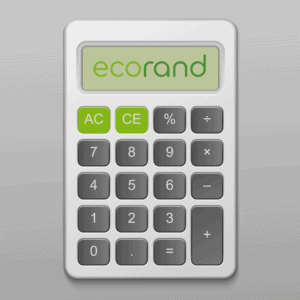Table of Content
What is Carbon Accounting?
Carbon accounting is the process of measuring and quantifying an organization’s greenhouse gas (GHG) emissions. This information can then be used to identify areas for reducing emissions and to track progress over time. In this article, we will discuss the steps involved in carbon accounting and the tools that can be used to help organizations measure their emissions.
Step 1: Identify Scope and Boundaries
The first step in carbon accounting is to determine the scope and boundaries of the emissions that will be measured. Organizations typically measure emissions from three different scopes: scope 1 emissions, scope 2 emissions, and scope 3 emissions.
Scope 1 emissions are emissions from sources that are owned or controlled by the organization, such as combustion of fossil fuels in boilers or vehicles. Scope 2 emissions are emissions from the generation of purchased electricity, heat, or steam. Scope 3 emissions are emissions from other activities that are not directly controlled by the organization, such as employee travel or the production of purchased goods and services.
Step 2: Collect Data
Once data has been collected, the next step is to calculate the emissions. This typically involves using emissions factors, which are the amount of GHG emissions that are released per unit of activity (e.g. kg of CO2 per unit of fuel consumed). These emissions factors can be obtained from government or industry-specific sources.
Step 3: Calculate Emissions
Once data has been collected, the next step is to calculate the emissions. This typically involves using emissions factors, which are the amount of GHG emissions that are released per unit of activity (e.g. kg of CO2 per unit of fuel consumed). These emissions factors can be obtained from government or industry-specific sources.
Step 4: Report Emissions
The final step in carbon accounting is to report the emissions. Organizations can report their emissions using a variety of different formats, such as the Global Reporting Initiative (GRI) framework or the Greenhouse Gas Protocol (GHGP). These frameworks provide guidance on how to report emissions and communicate the results to stakeholders.
Tools for Carbon Accounting
There are several tools and software programs available to help organizations with carbon accounting. Some of the most popular tools include:
Carbon Footprint Calculator: This tool can be used to calculate the emissions from different sources and activities. It typically includes a database of emissions factors and allows organizations to enter data on energy consumption, fuel consumption, and waste generation.
Energy Management Software: This software can be used to track energy consumption and identify opportunities for reducing emissions. It can also be used to set targets and track progress over time.
Supply Chain Management Software: This software can be used to track the emissions of suppliers and customers. It can also be used to identify opportunities for reducing emissions in the supply chain.
Life Cycle Assessment (LCA) Software: This software can be used to analyze the environmental impacts of products and services throughout their entire life cycle. This can help organizations identify opportunities for reducing emissions in their products and services.
Challenges and Limitations for Carbon accounting
Carbon accounting is not without its challenges and limitations. One of the main challenges is data quality and availability. Organizations may struggle to collect accurate and complete data on their emissions, particularly if they operate in multiple locations or have a complex supply chain.
Another limitation is the use of emissions factors, which can vary depending on the source and can introduce uncertainty into the emissions calculations.
Additionally, many organizations struggle with determining the appropriate boundary and scope of their accounting, and are uncertain on what activities to include or exclude in their accounting.
Conclusion
Carbon accounting is an important tool for organizations to understand and manage their greenhouse gas emissions. By following the steps outlined in this article.
Find out on how to offset your carbon emissions by planting trees worldwide with ecorand, the CO2 fighter NPO.
Become a CO2 fighter company with ecorand!

